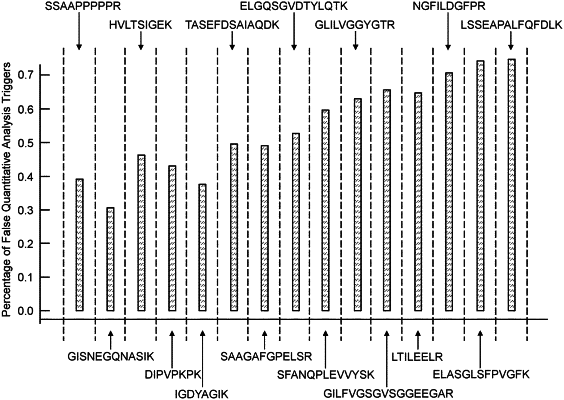| CPC G01N 30/7233 (2013.01) [G01N 30/8637 (2013.01); G01N 30/8641 (2013.01); G01N 30/8675 (2013.01); G01N 33/6848 (2013.01); H01J 49/004 (2013.01); H01J 49/4265 (2013.01); G01N 2458/15 (2013.01); G01N 2570/00 (2013.01)] | 21 Claims |

|
1. A Liquid Chromatography Mass Spectrometry (LCMS) system comprising:
a chromatograph configured to receive a continuous stream of a sample;
a mass spectrometer configured to receive separated fractions of the sample from the chromatograph and to ionize said separated fractions, whereby the ionization generates a plurality of precursor ion species; and
a programmable processor comprising computer-readable instructions that are operable to:
repeatedly:
cause the mass spectrometer to perform a data-independent analysis of a subset of the precursor ion species using a mass analyzer of the mass spectrometer, whereby mass spectra of a plurality of product-ion species generated by fragmentation of the precursor ion species are acquired;
calculate one or more degree-of-matching scores that relate to either a number of ions of an internal standard that are detected or to overlap between results of the data-independent analysis and tabulated mass spectral data of the internal standard; and
if each of the degree-of-matching scores meets a respective degree-of-matching condition, perform a quantitative tandem mass spectrometric analysis of the internal standard and a quantitative tandem mass spectrometric analysis of the analyte; and
calculate a quantity of the analyte in the sample by comparison between intensities of one or more mass spectral signals generated by the quantitative tandem mass spectrometric analyses of the analyte to intensities of one or more mass spectral signals generated by the quantitative tandem mass spectrometric analyses of the internal standard.
|